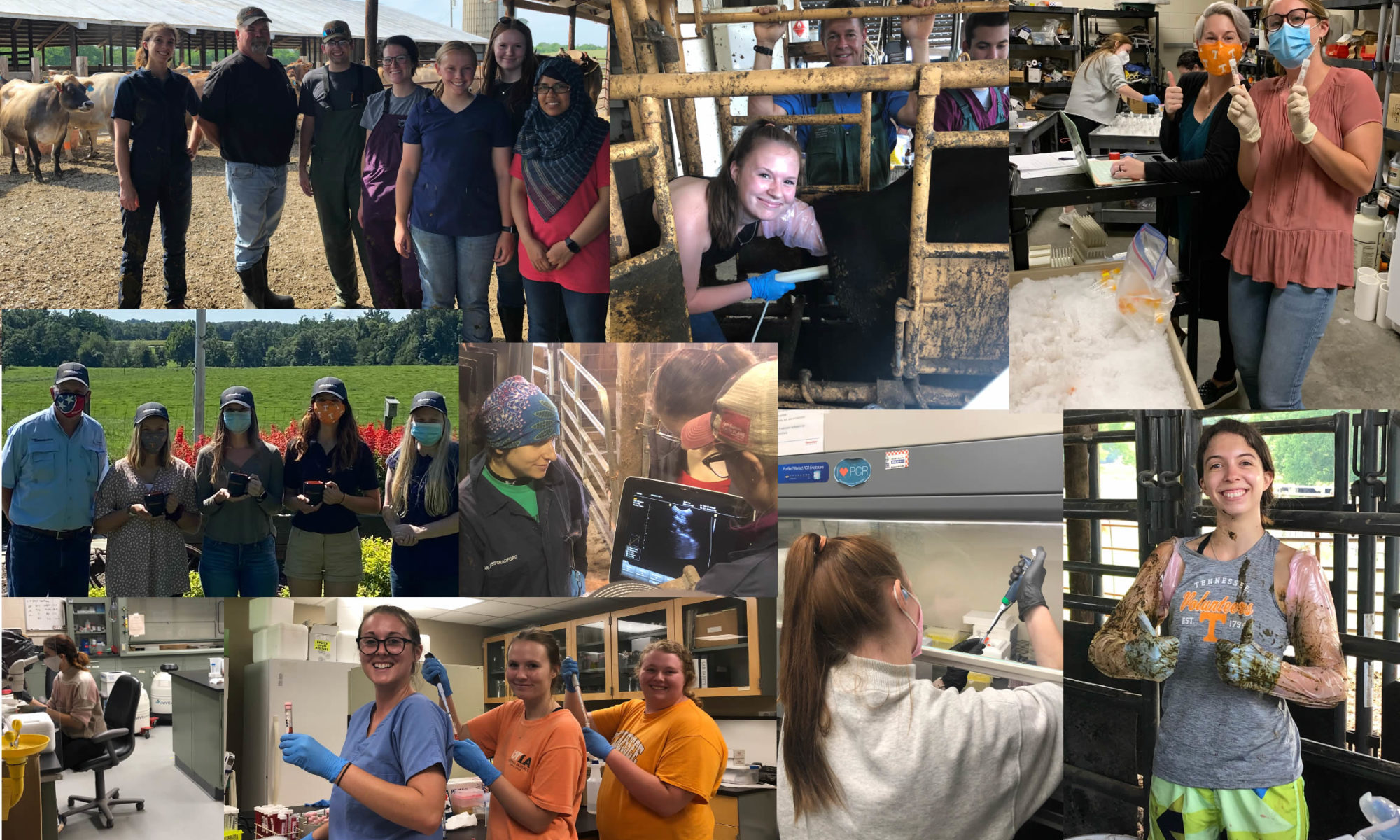
Animal Science has four key areas of research, Animal Health and Well-Being, Genetics and Genomics, Nutrition Physiology and Reproductive Physiology. Today we are highlighting a lab in the Reproductive Physiology area. Sarah Moorey, Assistant Professor, specializing in Reproductive Physiology and Genomics will share her lab with us.
Questions
What kind of work does your research group conduct?
Our lab focuses on research related to improving reproductive efficiency in beef cattle. We primarily focus on the follicle, which is a fluid filled structure on the ovary that contains the oocyte (egg) and cells that produce hormones, produce metabolites, and communicate with the oocyte to help cows ovulate the “best” oocyte possible. We are working to better understand how the follicle and follicular cells support the oocyte during the peri-ovulatory period (time around estrus and ovulation). We hope to better understand these relationships in an ideal scenario and leverage our knowledge to improve oocyte quality in reproductive management practices such as induced ovulation, superovulation, and in vitro embryo production that shorten or eliminate the oocyte’s critical time within the peri-ovulatory follicle.
What lead you to your research?
My M.S. degree focused on the impact of pre-ovulatory follicle size on the oocyte’s quality. This area of research was an exciting fit for me because I have been interested in reproductive technologies for beef cows since my 4-H days. I continued to be fascinated with the importance of the peri-ovulatory follicle during my Ph.D. and was very excited to have the opportunity to build my research program in this area. I think there is a lot yet to be learned about follicle-oocyte relationships during the peri-ovulatory period, so the challenge of charging forward into new territory keeps me on my toes and intrigued with this research area.
Where do you see your field in 10 years?
I am very excited about the future for this area of research. As we better understand follicle-oocyte interactions during “ideal” scenarios, I can envision multiple, impactful opportunities to help re-create these conditions during assisted reproductive techniques or common production scenarios like low body condition score. We can also begin to develop better strategies to supplement media for in vitro fertilization (IVF) procedures and improve IVF pregnancy success. In all, I see a lot more success and utilization of assisted reproduction because of increased knowledge!
Who are your lab members?
Doctoral Students
- Casey Read (3rd Year)
Master’s Students
- Emma Hessock (2nd Year)
- Emma Horn (2nd Year; Emma also serves as our lab’s Research Associate)
Undergraduate Students
- Allyson Stokes (Senior)
- Meredith Hinson (Junior)
- Samantha Roberts (Junior)